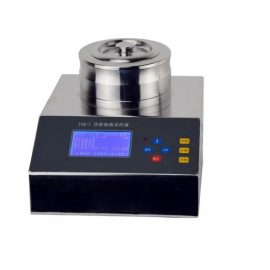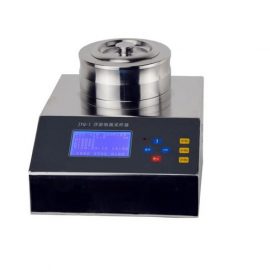Microbial Air Sampler: A Comprehensive Guide to Airborne Microorganism Detection

# Microbial Air Sampler: A Comprehensive Guide to Airborne Microorganism Detection
## Introduction to Microbial Air Samplers
Microbial air samplers are essential tools in environmental monitoring, healthcare, and industrial settings. These devices are designed to collect and quantify airborne microorganisms, providing valuable data for assessing air quality and identifying potential health risks.
## How Microbial Air Samplers Work
Microbial air samplers operate by drawing in a known volume of air and capturing airborne particles, including bacteria, fungi, and viruses. The collected samples are then analyzed to determine the concentration and types of microorganisms present. There are several types of microbial air samplers, each with its own method of collection:
– Impaction Samplers: These devices use a solid or liquid medium to capture particles as air is forced through a narrow slit or hole.
– Filtration Samplers: Air is passed through a filter that traps microorganisms, which can then be cultured or analyzed.
– Impingement Samplers: These samplers use a liquid medium to capture particles, which are then analyzed.
## Applications of Microbial Air Samplers
Microbial air samplers are used in a variety of settings to monitor and control airborne microorganisms:
– Healthcare Facilities: To prevent hospital-acquired infections by monitoring air quality in operating rooms, patient rooms, and other critical areas.
– Pharmaceutical Industry: To ensure cleanroom environments meet regulatory standards for sterility.
– Food Industry: To monitor air quality in processing areas to prevent contamination.
– Environmental Monitoring: To assess air quality in public spaces, workplaces, and outdoor environments.
## Choosing the Right Microbial Air Sampler
Selecting the appropriate microbial air sampler depends on several factors, including the type of microorganisms to be detected, the environment to be monitored, and the required sensitivity and accuracy. Key considerations include:
– Sampling Volume: The amount of air to be sampled, which affects the detection limit.
– Collection Efficiency: The ability of the sampler to capture a representative sample of airborne microorganisms.
– Ease of Use: User-friendly features such as portability, ease of maintenance, and data recording capabilities.
– Regulatory Compliance: Ensuring the sampler meets industry standards and regulatory requirements.
## Best Practices for Using Microbial Air Samplers
To obtain accurate and reliable results, it is important to follow best practices when using microbial air samplers:
– Calibration: Regularly calibrate the sampler to ensure accurate air volume measurement.
– Sampling Strategy: Develop a sampling plan that includes the location, duration, and frequency of sampling.
– Sample Handling: Properly handle and transport samples to prevent contamination or degradation.
– Data Analysis: Use appropriate analytical methods to interpret the results and make informed decisions.
## Conclusion
Microbial air samplers are invaluable tools for detecting and quantifying airborne microorganisms in various environments. By understanding how these devices work and following best practices, users can effectively monitor air quality, protect public health, and ensure compliance with regulatory standards. Whether in healthcare, industry, or environmental monitoring, microbial air samplers play a crucial role in maintaining safe and healthy air.
Keyword: Microbial Air Sampler



